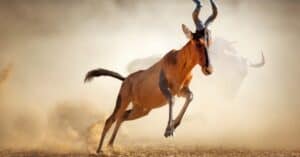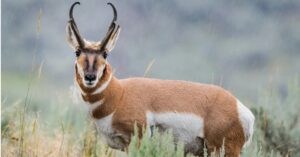Among Africa’s many species of antelope are kudus and nyalas, mid to large-sized mammals ranging throughout northeastern, eastern, and southern Africa. These graceful herbivores are often elusive, seeking the shelter of brush and trees. However, a discerning eye can pick them out against the landscape.
The genus Tragelaphus contains two species of kudus: the lesser kudu (Tragelaphus imberbis) and the greater kudu (Tragelaphus strepsiceros). Also within this genus is the nyala (Tragelaphus angasii). Below are the key differences between kudus and nyalas. Let’s compare!
Comparing a Kudu vs Nyala
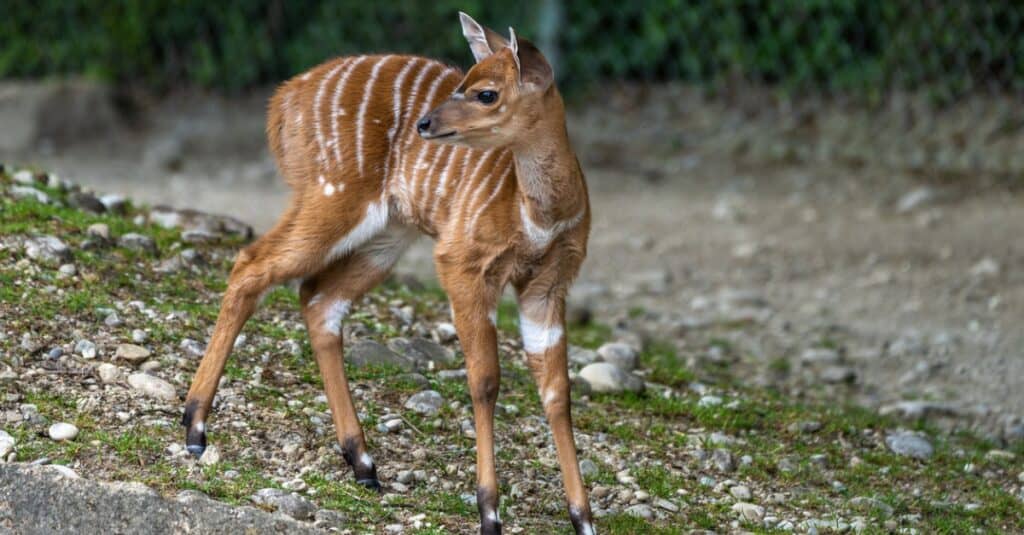
Tragelaphus angasii is a spiral-horned antelope native to Southern Africa.
©iStock.com/Rudolf Ernst
| Kudu | Nyala | |
|---|---|---|
| Scientific Name | Tragelaphus imberbis (lesser kudu) Tragelaphus strepsiceros (greater kudu) | Tragelaphus angasii |
| Habitat | Northeastern, eastern, and southern Africa Scrublands, savannas, and woodlands Lowlands, hills, and mountains | Southeast Africa Woodlands and grasslands Lowlands |
| Size | Lesser kudu: 35-41 inches tall, 130-230 pounds Greater kudu: 47-59 inches tall, 260-600 pounds | Male: Up to 43 inches, 216-276 pounds Female: Up to 35 inches, 121-150 pounds |
| Appearance | Spiral horns (males), spinal crest, facial stripes or patches, greyish-brown or reddish-brown coat, 6-15 white stripes on body | Spiral horns (males), white chevron between eyes, reddish-brown coat (females and young males), dark brown or bluish-brown coat (mature males), dark line of hair on back, chest, and belly fringe (males), 10 or more white stripes on body |
| Reproduction | Breeds any time of year (lesser kudu) or near the end of the rainy season (greater kudu), gives birth to 1 calf at a time | Breeds any time of year, gives birth to 1 calf at a time |
| Behavior | Males: Solitary, unaggressive Females: Gregarious, unaggressive | Males: Solitary or gregarious with other males, unaggressive Females: Gregarious, unaggressive |
The Key Differences Between a Kudu and a Nyala
The key differences between kudus and nyalas are habitat, size, appearance, reproduction, and behavior.
Kudu vs Nyala: Habitat
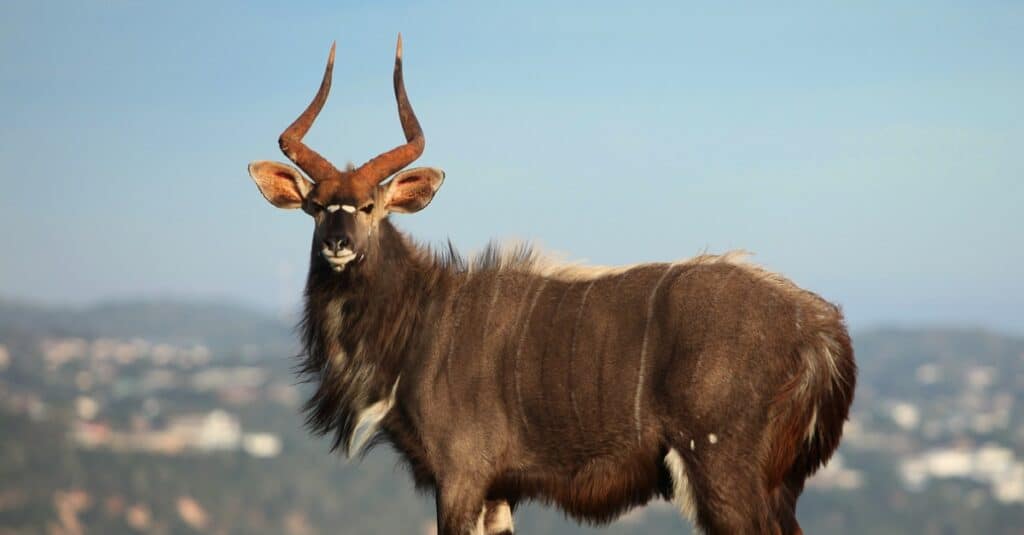
Nyalas roam several countries in southeastern Africa.
©iStock.com/jacojvr
Both kudus and nyalas share Africa in common. The two species of kudus inhabit different regions, with the lesser kudu roaming northeastern African countries such as Ethiopia, Tanzania, Somalia, Uganda, South Sudan, and Kenya. The greater kudu claims eastern and southern African countries like Ethiopia, Tanzania, Kenya, Zambia, Angola, Namibia, Botswana, Zimbabwe, and South Africa. The nyala inhabits southeastern African countries like Malawi, Mozambique, Zimbabwe, and South Africa.
Scrublands, savannas, and woodlands all play host to both species of kudus; nyalas typically prefer lowland grasslands and woodlands near permanent water sources. Kudus range throughout lowlands, hills, and mountains and are often located in arid or semiarid regions.
Kudu vs Nyala: Size

The greater kudu is one of the largest antelopes in the world, weighing as much as 600 pounds.
Nyala females are smaller in size than both lesser and greater kudu females. Whereas nyala females only grow up to 35 inches at the shoulder and weigh no more than 121-150 pounds, lesser kudu females reach 35-39 inches at the shoulder and weigh 130-160 pounds. Greater kudu ewes are even larger, standing as much as 47 inches at the shoulder and weighing 260-460 pounds.
Males of all three species are bigger than their corresponding females. Lesser kudu bulls grow 37-41 inches tall at the shoulder and weigh 200-230 pounds. Their greater cousins tower above them at 51-59 inches with an average weight of 420-600 pounds. Nyala bulls hover between the males of these two species, standing up to 43 inches at the shoulder and weighing 216-276 pounds.
Kudu vs Nyala: Appearance
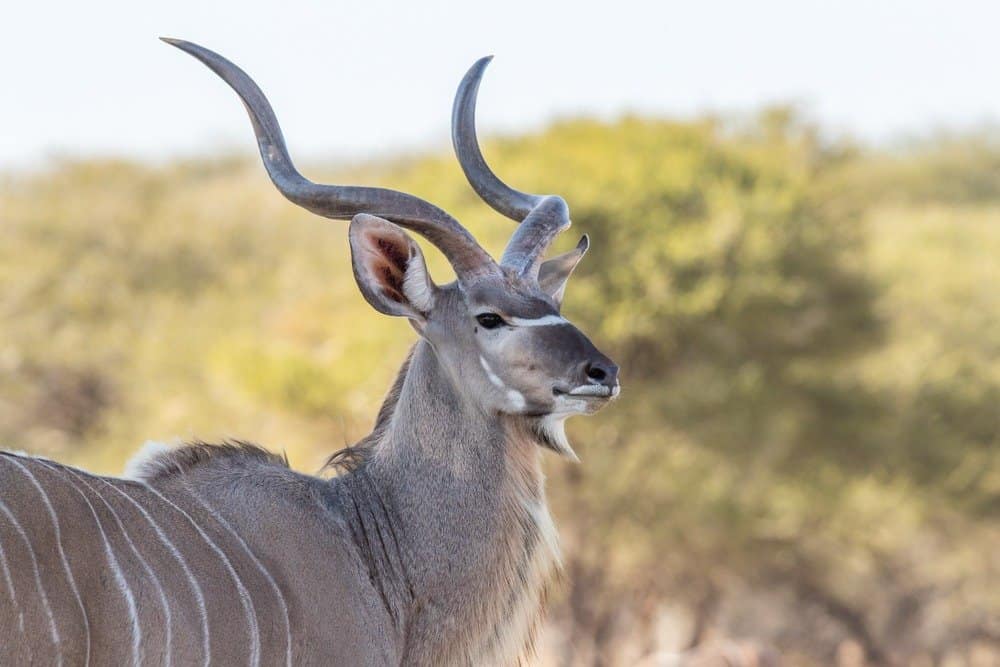
Kudu males have impressive horns growing up to 4.5 feet long.
©John Ceulemans/Shutterstock.com
Lesser and greater kudus may be challenging to tell apart on sight alone. Males of both species have greyish-brown coats, while females are reddish-brown; some individuals may possess a bluish-grey coloration. Females of both species lack horns, but greater kudu males’ horns may grow to an impressive 4.5 feet long. Greater kudus have white cheek patches, while lesser kudus often have stripes or other white facial markings. Perhaps the easiest way to tell these species apart is by the white stripes on their bodies. Lesser kudus will have 11-15, while greater kudus will only have 6-10.
Nyala males have significantly smaller horns with lengths no greater than 2.6 feet. Like kudu females, nyala ewes lack horns. Males and females alike sport a white chevron between the eyes. All nyalas start life with a reddish-brown coat, giving way to mature males to dark brown or bluish-grey. Both males and females share a dark line of hair down their backs, but only males have a chest and belly fringe. Females and young males have 10 or more white stripes on their bodies, and Nyalas’ bushy tails are white on the underside.
Kudu vs Nyala: Reproduction
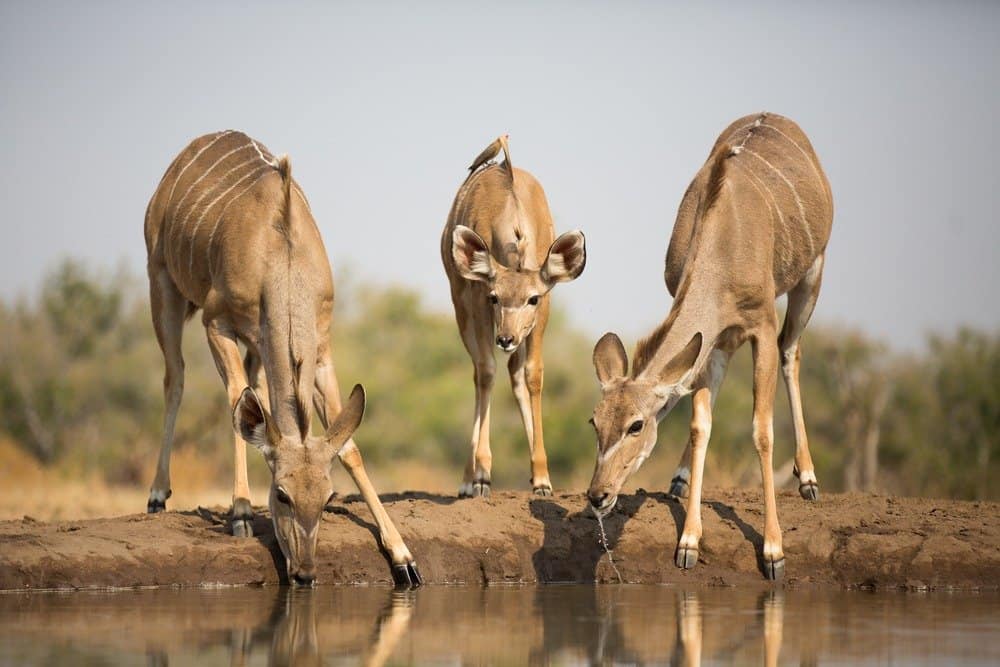
Kudus and nyalas both give birth to a single calf at a time.
©Villiers Steyn/Shutterstock.com
Both lesser kudus and nyalas can breed at any time of the year, though nyala breeding increases in the spring and again in the autumn. Greater kudus breed near the end of the rainy season and calve from February to June. The kudu gestation period lasts 7-9 months, while the nyala gestation period usually ends at 7 months. Females of these species leave their herds to give birth to a single calf in an isolated location. The mothers return periodically to nurse their secluded calves until they are ready to return to the herd.
Kudu mothers wean their calves by 6 months, while nyala mothers wean their calves by 7 months. Lesser kudus are sexually mature by 18 months. Greater kudu females reach breeding age by 15-21 months while males wait until 21-24 months. Nyala females reach sexual maturity by 12 months, with males lagging at 18 months.
Kudu vs Nyala: Behaviour
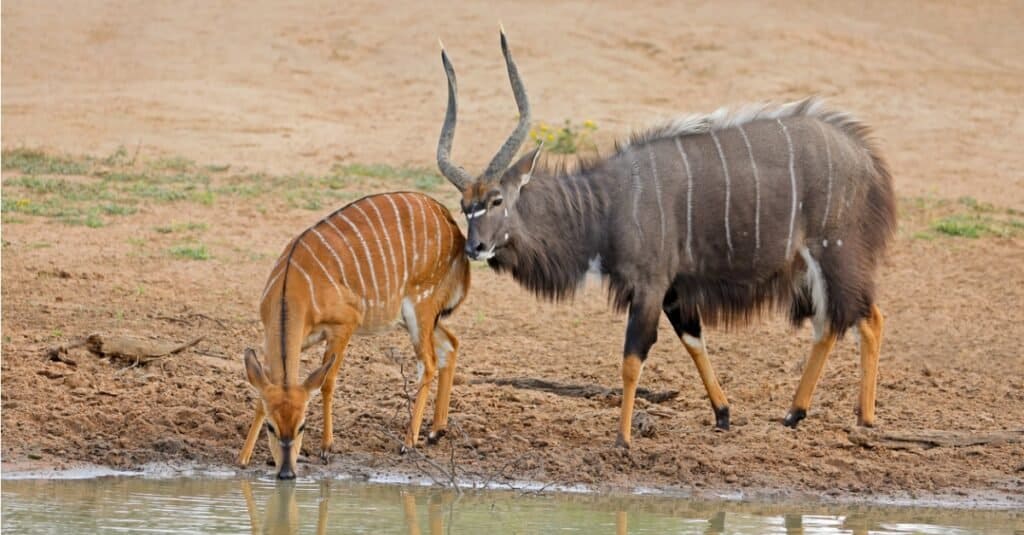
Like kudus, nyalas are generally unaggressive animals except at mating time.
©iStock.com/EcoPic
Neither kudus nor nyalas are aggressive animals; nyalas can be shy and elusive. Males of all three species usually settle disputes by posturing, including lateral displays (standing sideways to display size). Bulls may lock horns and vie physically for dominance when fighting for mating rights. Bull nyalas often toss up dirt with their horns and expand their manes to threaten their opponents.
Both kudu and nyala bulls live solitary lives except when they form bachelor herds of adult males. Female kudus live in herds of up to 24 individuals, while female nyalas live in herds of 2-30 individuals.
Kudu vs Nyala: Diet and Predators
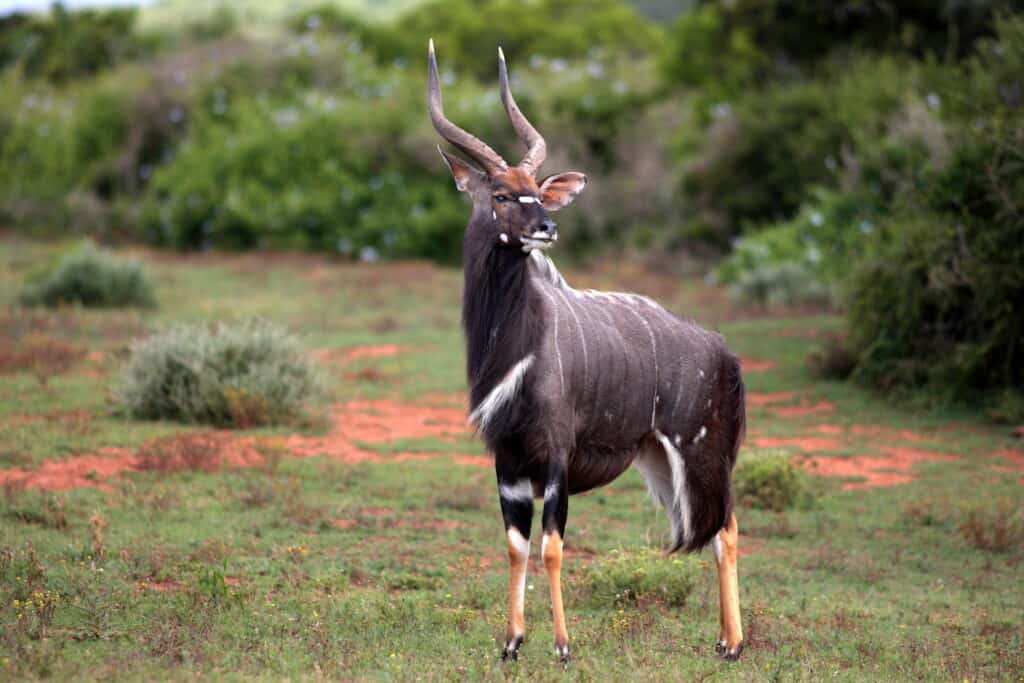
Nyalas, in particular, prefer to stay near permanent bodies of water.
©JONATHAN PLEDGER/Shutterstock.com
Both kudus and nyalas are herbivorous. Food sources include leaves, twigs, shrubs, flowers, herbs, grasses, seeds, fruits, and roots. Nyalas, in particular, prefer to stay near permanent bodies of water. Lions, leopards, hyenas, African wild dogs, and humans may be predators. Baboons and birds of prey may target young antelopes.
Kudu vs Nyala: Lifespan

Both kudu and nyala bulls live solitary lives except when they form bachelor herds of adult males.
©Francois Du Toit/Shutterstock.com
Lesser kudus live 10-15 years in the wild, though greater kudus may live up to 23.5 years, and Nyalas may live up to 19 years in the wild.
The photo featured at the top of this post is ©
Thank you for reading! Have some feedback for us? Contact the AZ Animals editorial team.



